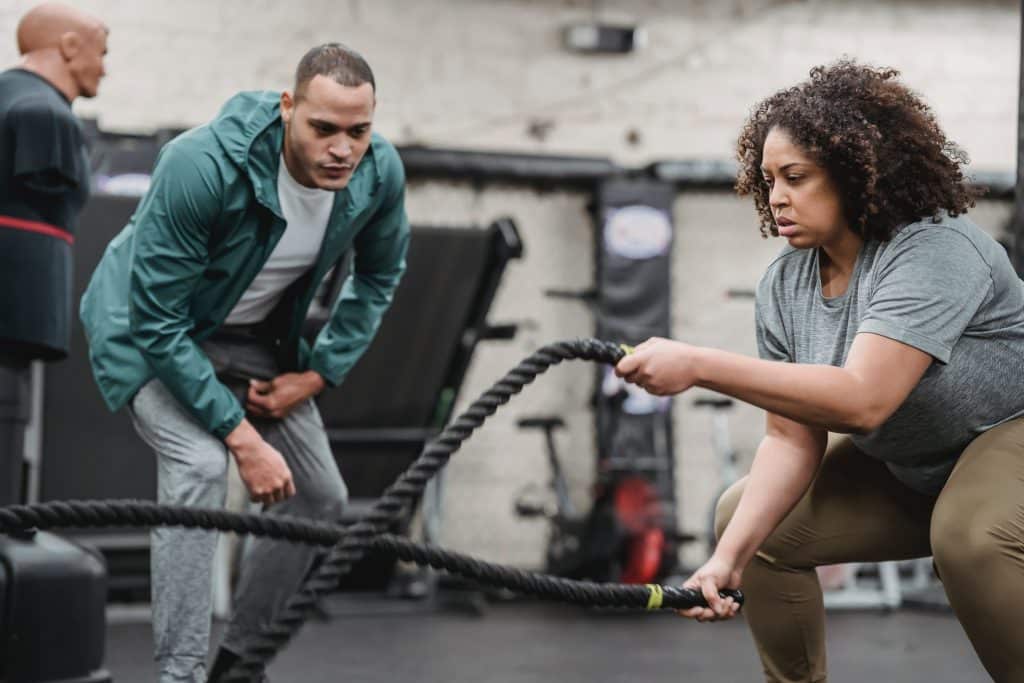Cardiovascular endurance is one of physical performance’s most overlooked yet highly important aspects. Whether climbing stairs or training for your next martial arts competition, having a good gas tank is always a good thing. The average person often overlooks the importance of cardiovascular endurance, which should not be the case because good cardio is a great indicator of health.
What Is Cardiovascular Endurance?
Cardiovascular endurance, also called cardiorespiratory fitness or cardiorespiratory endurance, measures how well you can exercise for extended periods. It is the level at which your heart, lungs, and muscles work together when exercising for an extended period. If you have high cardiovascular endurance, you might be able to run a few miles without stopping. With a low endurance, you’ll likely be huffing and puffing after just a few minutes of exercise.
Why Is Cardiovascular Endurance Essential?
While all types of exercise are important for maintaining your overall health, cardiovascular endurance is special because it can help increase your body’s ability to fight off certain diseases, especially as you age. Some recent scientific studies have shown that those with higher cardiovascular endurance have a decreased risk of developing high blood pressure, coronary heart disease, and diabetes.
Benefits Of Cardiovascular Endurance
Here are a few perks of cardiovascular endurance:
Better Sleep
The fitter you are, the better your sleep patterns. A study published in 2010 evaluated the link between sleep quality and cardiorespiratory fitness in adolescent girls. Those classified as “fit” were more likely to report better sleep.
Less Illness
Higher cardiorespiratory fitness is associated with a lower incidence of hypertension, diabetes, and heart failure. In addition, getting better sleep helps your immune system, and people who don’t get enough quality sleep are more likely to get sick following exposure to a virus.
Everyday life upgrade
Better cardiovascular fitness can help you with seemingly simple daily tasks, like carrying heavy groceries, taking the stairs instead of the elevator, keeping up with your kids, and much more.
How Is Cardiovascular Endurance Measured?
Cardiovascular endurance is measured by how well your body can utilize a certain amount of oxygen. Also, how much oxygen you can take in during high-intensity aerobic activity, such as sprinting or swimming.
For measuring your cardiovascular endurance, it’s important to measure your Resting Heart Rate. The resting heart rate can be taken after you wake up in the morning or at least more than two hours after exercising or any stressful event.
Finding The Heart Rate
Find your pulse on your wrist, just below your thumb, or on your neck. Press two fingers to your pulse, and count the number of beats for 15 seconds. Multiply that number by four — that’s your heart rate.
RHR ─ Cardiovascular Endurance
An adult’s normal resting heart rate is 60 to 100 beats per minute. The resting heart rate closer to 60 beats per minute or closer to 100 gives you an indication of how high your cardiovascular endurance is. Closer to 60 means, your heart has plenty of room to deliver oxygen during workouts while closer to 100 means, very little capacity for oxygen delivery.
More sophisticated tests to measure cardiovascular endurance include metabolic equivalents, or METs, maximum oxygen uptake, or VO2 max. A sports physician or professional athlete would likely do these tests.
Exercises for Better Cardiovascular endurance
Any exercise you do that increases your heart rate technically requires cardiovascular endurance. However, certain types of activities are famous for their endurance focus—dancing, swimming, and HIIT.
Let us dig out how these improve cardiovascular endurance.
Dancing
One of the easy ways to improve cardiovascular endurance is dancing. There’s no better way to get a workout and relieve stress than busting a move. To get started with dancing, check out your local gym — they likely offer several different types of dance classes, from Zumba to ballroom dance to aqua dance.

Findyourgym.ae can help you find a gym offering dance classes; just click the link gym near me.
Swimming
Another favorite cardio workout is swimming. Like dance, you can likely find many swim workout classes at your local gym. Using your entire body while swimming and periodically holding your breath means a good swim will push your fitness level and overall health to the max. Some studies indicate that swimming might be the best thing you can do to lower your blood pressure and cholesterol and increase your cardiovascular endurance. And yes ─ being a low-impact, cardio doesn’t get much better than swimming.
Check out the swimming classes in your vicinity.

High-intensity Interval Training (HIIT)
HIIT packs the best workout in the least amount of time by alternating between high-intensity and low-intensity cardio. A 2016 study found that a daily 10-minute interval workout improves oxygen uptake as a 50-minute continuous pace workout. You can make HIIT work for whatever workout routine you enjoy the most.

Related Article:

Endurance Vs Stamina
Are they the same? How can I improve at both? All the answers are gathered here!








Comments 0